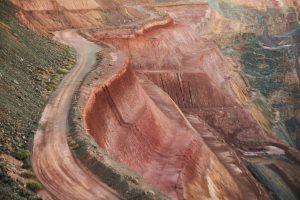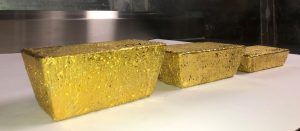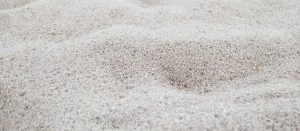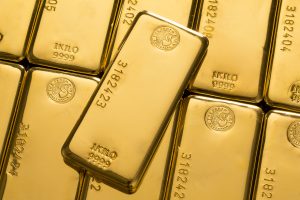FORMER World Bank boss Robert Zoellick set the scene early. Those of the about 2150 delegates in attendance heard the serial adviser to US presidents reveal he is more concerned about Donald Trump ripping up international trade agreements than a shift in US security alliances. That was before Trump and Kim Jong-un threatened a rebirth of the Cold War’s M.A.D. circus. Tough times for humanity but a bonanza for gold. Oh, and Zoellick also warned global interest rates would be on the rise, and that the era of cheap debt was coming to an end.
GOLD glittered wherever you went. Transformed ex-Philippines gold play Red 5 set the scene pre-Diggers with its defining double-deals to buy Gold Fields’ Darlot and Saracen Mineral Holdings’ King of the Hill assets. Red 5 wasn’t presenting at Diggers but its new big shareholders Gold Fields (courtesy of global CEO Nick Holland on his maiden Diggers visit) and Saracen (Raleigh Finlayson) were. And chatter about the next wave of gold sector corporate plays was everywhere. Surely the action will follow, though St Barbara boss Bob Vassie – one of the most likely participants in the manoeuvring – was willing to say what everyone thinks: management and board egos often get in the way of a good deal. Diggers officials say 82 closed-door meetings were held in the Arts Centre rooms over the three days. Watch out for the ensuing news flow. Interesting, too, that Anglo American CFO Stephen Pearce (and former Fortescue Metals Group CFO) made the journey from London to Diggers, and presumably not just to see his colleague, technical director Tony O’Neill, present on Monday morning.
LAST YEAR we talked endlessly about dividend policies as gold stocks led by Northern Star Resources and Evolution Mining talked up their credentials as a new breed of miners – that is, ones that deliver shareholder value. This year dividends were replaced – as a topic – by resource lives. That did not stop Vassie from announcing St Barbara’s first dividend since 1995 on the back of a massive corporate turnaround and the Gwalia mine’s outperformance – for those with memories: back then St Barbara owned the Bluebird mine near Meekatharra, while Gwalia was owned by the Lalor brothers’ Sons of Gwalia!
BACK to resource lives. With an average of about five years, Australian gold mines’ resource lives lag those in North America. As do share price valuations. Northern Star’s top team of Bill Beament and Stuart Tonkin claimed an upgraded 10-year average across its suite; Evolution’s Jake Klein said his assets had a life of greater than eight years; and Westgold Resources boss Peter Cook reminded everyone of the 15moz resource base across his assets, including at the Central Murchison Gold Project (sprinkled between Cue and Meekatharra). “We’re not fancy, but we’re cheap,” Cooky added.
SOME of Cooky’s enthusiasm clearly rubbed off on investors. Westgold shares jumped 13% over the past week. Most gold stock that presented at Diggers were up though rises were more modest, except Wiluna producer Blackham Resources (16%, off a low base), Leonora hopeful Kin Mining (13%) and the best greenfields explorer, Gold Road Resources (7%). At the other end of the ledger, Michael Fotios’ Eastern Goldfields lost 13% amid claims contractors were not being paid. Fotios raised eyebrows during his presentation when he blamed decade-old legacy issues for some of the payment disputes.
NOT surprisingly, the Don Harper-run Kin was named the Best Emerging Company by Diggers judges Trevor Sykes and Ross Louthean at Wednesday’s gala dinner. The awards (and 1oz gift) were generously sponsored by the Perth Mint. St Barbara was a popular winner of the Digger of the Year, for Vassie’s achievement in resurrecting the company and turning Gwalia into a world-class underground gold mine, and another Cannings Purple investor relations client, Gold Road, was a comfortable winner as Dealer of the Year (for its value-adding Gruyere mine development deal with Gold Fields). Note to Kin: Gold Road was the Emerging Company in 2011, and now stands on the cusp of joining the ranks of gold producers while retaining a huge appetite – and $30m a year budget – for greenfields exploration across the Yamarna belt.
IT WAS noted again how few women were among the list of Diggers presenters. The classy Andrea Maxey represented AngloGold Ashanti with aplomb, but that was it. As Diggers organisers rightly point out, they select companies to present. It is up to the companies to show leadership and empower their women executives to represent the company. Here’s to an improvement in the gender balance in 2018.
BUT it was great to see the Financial Review’s Perth reporter Tess Ingram pick up the media award. A thoroughly deserved accolade. As was the big gong, the Geoffrey Stokes Memorial Award, which went to veteran director Jim Askew. Askew’s corporate roll call is too long to list but includes OceanaGold, Evolution Mining, Golden Shamrock, and of course Ausdrill. Askew’s daughter Kate is a former highly credentialed business journalist who began her career at the Kalgoorlie Miner. It is also worth recognising WASM student Janelle McPhee who received the Ray Finlayson award for outstanding student. Surely she will be inundated with job offers.
NOT ALL nickels are created equal. As delegates sat down for Wednesday’s dinner in the marquee, news spread that First Quantum Minerals was shutting the Ravensthorpe laterite nickel mine – because of low nickel prices. This will cost hundreds of jobs and mark the second time Ravensthorpe has been closed. The mine’s original developer, BHP Billiton, famously blew $US2 billion or so on building the mine, only to shut it 18 months later (in 2009) because of low nickel prices. Unlike the more famous Murrin Murrin laterite plant near Leonora (owned by Glencore), Ravensthorpe’s cobalt credits are obviously not sufficient offseat the weak nickel price.
So while Ravensthorpe goes through its second death experience, BHP’s Nickel West boss Eddy Haegel came up with arguably the most interesting news at Diggers – the Think Big miner is spending $US43.2m at its Kwinana nickel refinery building a nickel sulphate hexahydrate circuit. The driver is the realisation that nickel-rich lithium-ion batteries are best in class and increasingly the future. Nickel West says nickel powder, rather than nickel pig iron and ferronickel, comes out trump because of its cheap conversion to nickel sulphate. It therefore should spell a boon for nickel sulphide players (Nickel West, Western Areas, Independence Group and those Kambalda players not on care & maintenance) but excludes the nickel laterite miners. Nickel West’s Kwinana project, to produce 100,000tpa of nickel sulphate hexahydrate with an option to expand to 200,000tpa, should deliver an IRR of 43%. With BHP all of a sudden on board the battery boom, will Rio Tinto return to DnD in 2018 to talk up its world-class Jadar lithium project in Serbia?
BATTERY ingredients featured prominently, and we saw the return to Diggers of one-time Atlas Iron boss David Flanagan with his new vehicle, Mozambique-focused graphite play Battery Minerals. Flanagan never thinks small, of course, so BAT is supposed to be much more than a graphite miner. A definitive feasibility study into a spherical graphite pilot plant in Nevada, US, not far from Tesla’s Gigafactory, is due for completion in Q1 next year. Operating in Africa, of course, remains a challenge, as a host of ASX companies with gold, graphite and copper ambitions across the Indian Ocean have found. Having said that, West African Resources boss Richard Hyde is attracting lots of positive attention to its Sanbrado gold project in Burkina Faso.
THE BATTLE for acclaimed superiority in the mid-cap gold space is fast rubbing off on the lithium sector. It is early days but it was a theme picked up by the chattering classes at Diggers. Ken Brinsden’s Pilbara Minerals and Galaxy Resources (represented by CFO Alan Rule) led the spodumene miners program while Chris Reed’s Neometals (as part-owner of the Mt Marion spodumene mine) talked up its lithium refinery ambitions. Will Kidman Resources be in Kalgoorlie next year to talk up its integrated Mt Holland lithium mine-and-refinery project? And will cobalt (the other battery mineral) and zinc (not battery boom, but global supply shortfall) be better presented next year?
SPEAKING of processing, the friendly catering staff who looked after the well-being of delegates tallied up the following stats: across morning and afternoon teas, lunches and dinners at the Arts Centre the consumption totalled 500kg chicken, 700kg beef, 300kg lamb, 8000 bread rolls, 400 loaves of bread, 2000kg fruit, 2000kg vegetables and 50,000 pastry items. The Aggreko-sponsored coffee machine stand went through at least 60kg of coffee beans while next door the Emeco-sponsored juice store processed 1000kg apples, 1000kg oranges and 1000kg carrots. Pitcher Partners supplied 10,000 battles of water, to try to balance out delegates’ alcohol input. This writer knows what he is talking about.
THAT’S ALL from Diggers & Dealers 2017. May the digging and dealing step up a notch now, for some big outcomes in 2018.



